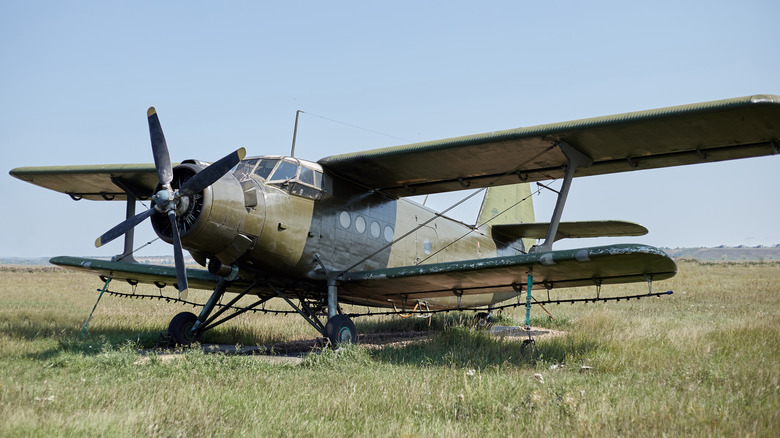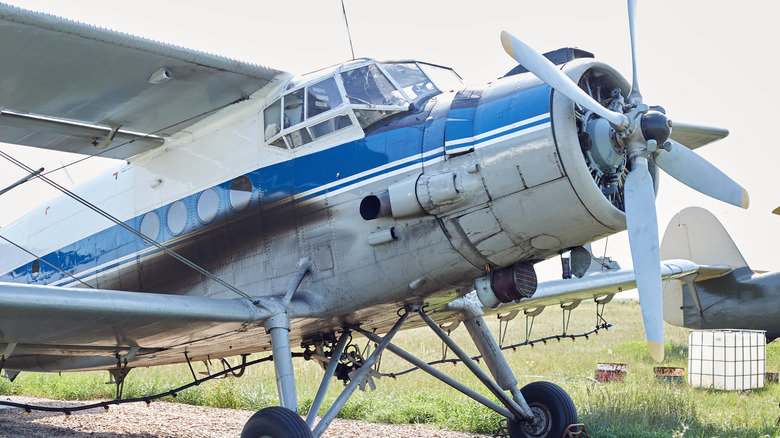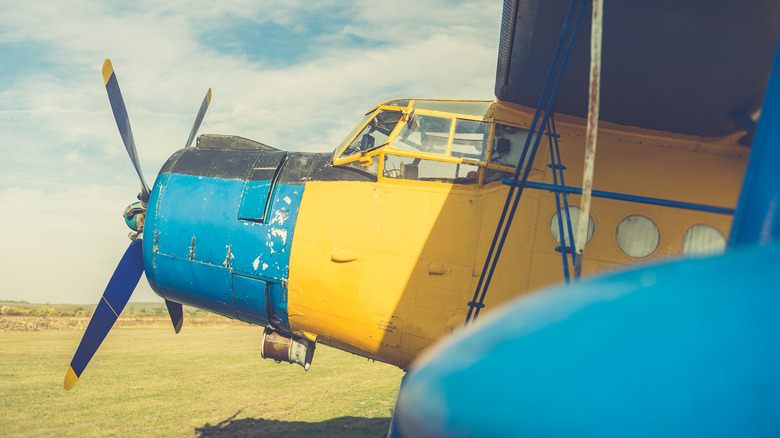This Versatile 1940s Soviet Biplane Was Used Way Longer Than You'd Think
The Antonov AN-2 looks to be a product of a bygone era of quaint flight. The biplane was a product of early flight limitations. The Wright Brothers utilized biplane construction to create shorter and lighter wings than would have been necessary with a single-wing design. This trend held firm for a short time, but by the end of World War II, biplanes had become essentially obsolete due to the aerial prowess of single-wing vessels like the P-51 Mustang.
Even so, biplanes remained a niche build that would continue to offer value in certain circumstances. The AN-2 is a unique design in this realm because it wasn't developed until after the end of the World War II, placing it seemingly far behind the curve of technological advancement. Yet, this Antonov aircraft — one of the largest biplane designs powered by a single engine — would continue to be built until 2002, with a total production of 11,915 airplanes.
In fact, the Guinness Book of World Records notes the Antonov AN-2 as "the most intensively manufactured" biplane after World War II. The aircraft itself is capable of some astounding feats, and it's known for a unique ruggedness that's delivered through low-pressure tires in the landing gear and high-lift devices integrated into the wings. These features allow pilots to effectively take off and land on unpaved runways and small fields.
The AN-2 was designed as an agricultural aircraft
Antonov Design Bureau's first aircraft was the AN-2. Built in the Kyiv Aviation Plant starting in 1948, the first AN-2 test flight occurred on August 31, 1947. The aircraft was built to accommodate short take off and landing (STOL) requirements of the Soviet forestry service. STOL capabilities would continue to factor heavily into aircraft design for decades, and remains a key feature of certain civilian and military applications alike.
The aircraft was built to provide civilian air service for forestry and agricultural uses, including geographical survey needs. The vehicle has been known to fly with full control at speeds as slow as 30 miles per hour, and it doesn't exhibit a known stall speed threshold.
This makes it a perfect aerial tool for overhead imagery collection tasks and other remote sensing activities, for crop maintenance, and even scouting for livestock security purposes. AN-2 aircraft offered a versatile platform for flight in remote areas that may not support the same kinds of ground infrastructure as more urbanized communities.
AN-2s served in combat roles, as well
The AN-2 was primarily built to service civilian aerial requirements, but this wasn't the only application for the plane. The short takeoff capability and the varied runway conditions that AN-2s could effectively utilizes meant that they offered an excellent improvised attack option for light combat missions.
North Vietnamese forces are noted to have flown AN-2s to attack U.S. positions during the Vietnam War. One incident in January 1968 saw North Vietnamese AN-2s attack a CIA-operated radar station across the border in Laos. The AN-2s were outfitted with bombing capabilities and machine guns.
More recently, in March 2022, The Eurasian Times reported that 42 AN-2 aircraft had been identified at Sescha Air Base, very close to the Ukrainian border (with the help of Maxar satellite imagery). Dylan Malyasov, A defense advisor and military journalist told the outlet that "Russian forces have tested the use of AN-2s as decoys to locate Ukrainian air defense positions and radar emitters which could then be followed up with hits by anti-radiation weapons, standoff munitions, or electronic countermeasures."
The Antonov AN-2 remained in production for an incredibly long time, and it's safe to say that it will likely continue seeing service for military and civilian pilots for many years to come.


